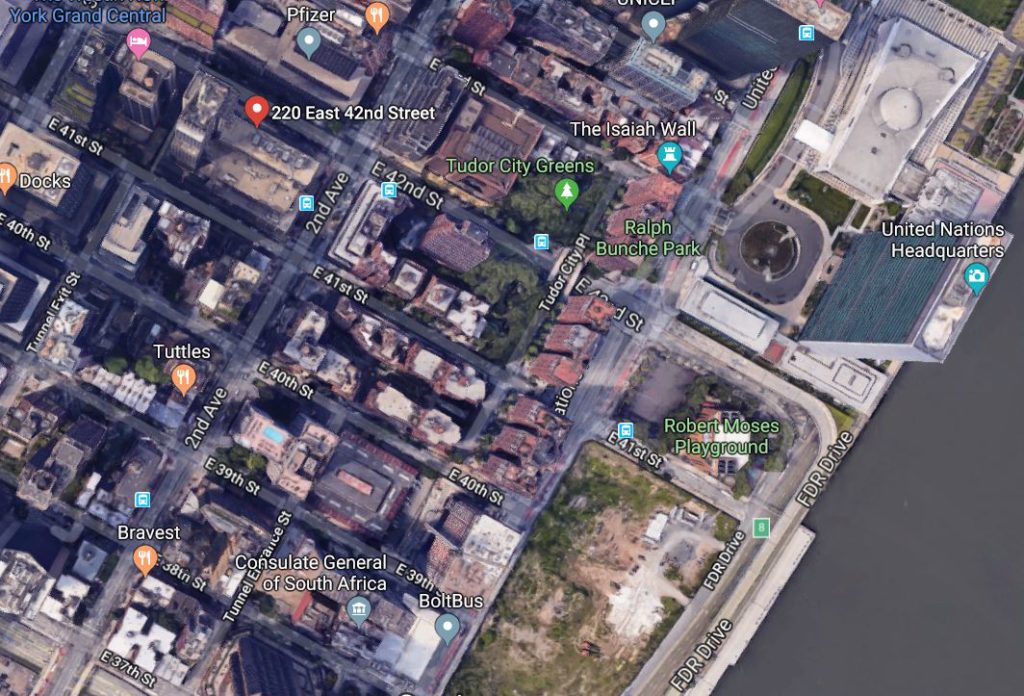Since my last two posts were about too many cats, I thought it appropriate to be fair and balanced by following up with a story about the history of the Daily News and too many dogs.
Years ago, the New York Daily News had a daily feature called “The Inquiring Photographer,” in which citizens suggested questions for a roving photographer to ask ordinary people on the streets. For the March 16, 1922, issue, Miss Anne Bonnard of 19 West 52nd Street posed this question: Are there too many dogs in New York? For submitting this question, Miss Bonnard received $1 from the Daily News.
Following is a summary of the responses (I love the last one—it seems quite appropriate for today’s world):

Miss Margaret Cordes, a dressmaker from 248 West 121st Street, said she did believe there were too many dogs in the city. “Every day you read in the newspapers where some child or woman has been bitten by a dog. Every dog should be muzzled, but many are not.”
R.F. Morton, who made his living in the textile business and resided at 96 Fifth Avenue, said there were too many dogs living in apartment buildings. “They belong in the country. I had a very valuable dog when I first came to the city, and the steam heat killed him.”
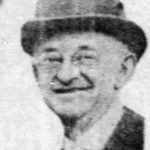
Retired contractor John Curry of 100 East 124th Street said the city had too many “useless dogs,” which he explained included poodles, lap dogs, and toy dogs. “Most pet dogs get more attention than some babies,” he said, noting there were not enough useful dogs. (Many of the stories I’ve written about women and their lap dogs can prove his last statement.)
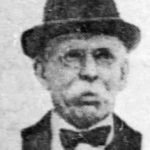
David A. Fisher, a clerk from 339 East 20th Street, also said he felt there were not enough good dogs in New York. The problem, he said, was with all the stray dogs which had no owners and should be rounded up. “We could well imitate the Germans and use police dogs,” he added.

And finally, the roving photographer asked Miss Nora Dempsey, a clerk who lived at 1826 West 10th Street, what she felt about the city’s canine situation. “There are not too many dogs here or any place else, because a dog is man’s most faithful friend if treated right. But there are far too many two-legged dogs here.”
Gotta love it.
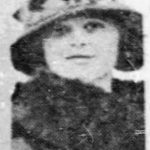
A Brief History of the New York Daily News
Our country’s press has been taking a bad rap in recent months—and newspapers like the Daily News have been laying off hundreds of workers—so I’d like to give a little love to what was once one of the most successful newspapers of our time.
Before I get into the history of the modern paper that we know today, I want to give a shout-out to the first New York Daily News and to my great-great uncle Joseph W. Gavan, who was the paper’s managing editor in its final two years.
This evening paper, which had no relation to today’s Daily News, was founded by Gideon J. Tucker in 1855, who edited it until 1857. W. Drake Parsons took over until 1860, which is when he sold it to Fernando Wood. Soon thereafter, Fernando’s brother Benjamin bought the majority interest in the paper.
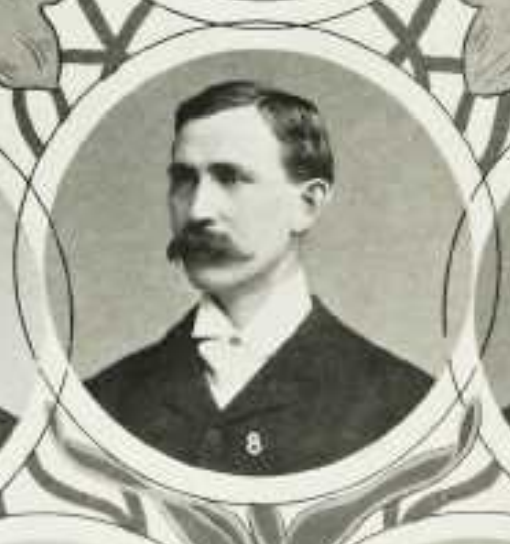
Under Benjamin Wood’s reign, the Daily News was a Democratic, pro-Southern/Confederate, pro-slavery, anti-Lincoln publication that supported Stephen A. Douglas in the 1860 presidential election. After the Confederates fired at Fort Sumter on April 12, 1861, Wood refused a mob’s demand that he fly the American flag at the paper’s offices, which were located in a five-story building on Park Row, aka Newspaper Row.
In August 1861, a federal grand jury charged that the Daily News printed material “calculated to aid and comfort the enemy.” Although the courts took no action, Postmaster General Montgomery Blair refused to accept the Daily News for mailing. Wood tried delivering the paper by railway express, but as soon as the government found out, detectives were placed on express trains out of New York.
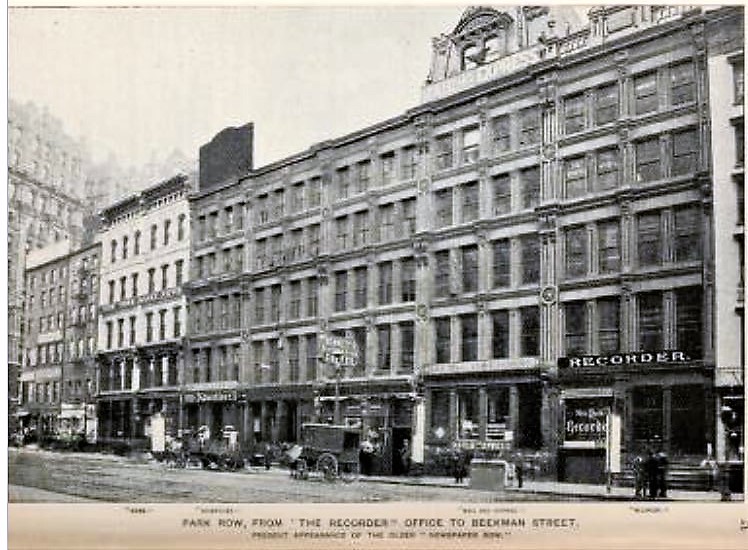
Wood was eventually allowed to resume publishing the paper 18 months later, in May 1863. He continued as editor of the paper until his death in February 1900. (Incidentally, despite being arrested for printed pro-Confederate coded messages and being called a traitor by many, Wood went on to serve three terms on the United States Congress and two years in the New York Senate.)
Wood’s widow, Ida, sold the Daily News to Frank A. Munsey, who in turn sold it to Thomas Charles Quinn in 1904. Quinn hired my uncle Joseph Gavan to serve as the paper’s managing editor until it ceased publication in December 1906.
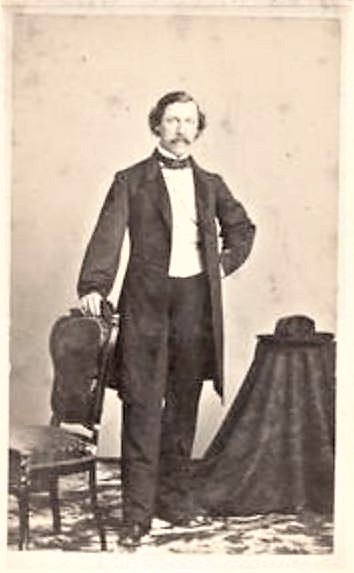
Joseph W. Gavan, nee Gavaghan or Gavigan, was the son of Patrick Gavaghan and Mary Henry Gavaghan. Born in County Sligo, Ireland, around 1865, he came to New York in his twenties and took a job as a news reporter in Long Island City.
Fluent in English and Gaelic, Joseph took his reporting skills to Philadelphia and Washington, DC. While living in Maryland and working as a special correspondent in Washington, he studied at Georgetown University and received a law degree in 1904.
Returning to New York City in the early 1900s, he was called to the bar but soon returned to journalism to become the managing editor of the Daily News.
Joseph was a Democrat and friend of the Tammany political machine. He was also a well-known political activist (he was associated with several radical Irish-American organizations and was good friends with fellow attorney James Mark Sullivan, who was arrested in 1916 for aiding in the Irish rebellion). Under his editorship, the Daily News served as an organ of Tammany Hall and catered to labor unions, Catholic Church news, and other topics of interest to Irish-Americans.
The Illustrated Daily News
About a dozen years after the first Daily News folded, cousins Joseph Medill Patterson and Robert R. McCormick –who had joint control of their grandfather Joseph Medill’s Chicago Tribune–founded what they first called the Illustrated Daily News. According to the story, the two cousins were serving overseas during World War I when they decided to start an illustrated, mass-market daily newspaper in New York City as soon as the war was over. Their first issue hit the morning news stands on June 26, 1919.
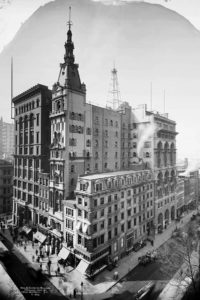
The tabloid newspaper was considered to be quite sensationalist, especially with all its illustrations, photos, and scandalous stories. However, the paper grew rapidly (the tabloid format was easy to read on the subway), and by 1922 its circulation reached 400,000. Soon a Sunday edition was introduced, and by the end of 1924, with 750,000 readers, it was the most widely read newspaper in the country.
The “Inquiring Photographer” was a highly popular feature, as were daily comics such as “Little Orphan Annie.” Readers also loved all the stories about cats and dogs, such as the story about Blackie the cat, which will be featured in my upcoming book, The Cat Men of Gotham (shameless plug).
During its first two years, the Daily News occupied rented offices in the New York Mail and Express Building at 25 City Hall Place. This area was known as Printing House Row. City Hall Place was removed in the late 1920s to make way for the Federal Courthouse.
In 1921 the paper moved to 23-25 Park Place, a converted five-story loft building (still standing) with a cast-iron ground floor and stone frontage. The new headquarters was just a few blocks away from the newspaper’s old home, and still on the edges of the city’s newspaper district.
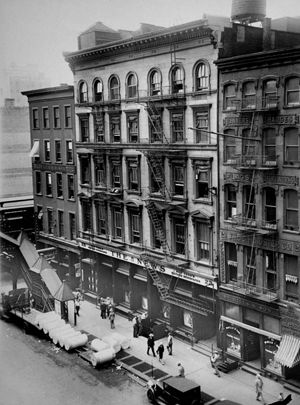
Although the new building was much larger than the small offices on City Hall Place, eventually the paper’s printing press had to be relocated to Brooklyn. By 1930, with about 190 people in its editorial department, it was time for the Daily News to find a new home.
In 1930, the paper’s employees moved into a large, 36-story building at 220 East 42nd Street, which was designed by architect Raymond Hood. In their official announcement of acquisition of their site, the News described the area as follows:
“East 42nd Street has been undergoing a marked change. The Tudor City development of the Fred F. French Company has directed attention to the possibilities of the upper east side, and on the site of the old St. Bartholomew’s Parish House and Chapel, almost directly opposite the plot just purchased by the News, the Schulte Syndicate is now constructing a new 20-story office building. The Tishman Realty & Construction Company is planning to erect a similar office building at 226-232 East 42nd street, which is the 100 feet of 42nd street frontage immediately adjoining the News plot on the east. These developments, together with that of the News, which alone will amount to about $8,000,000, will go a long way toward establishing this block as a high grade business center.”
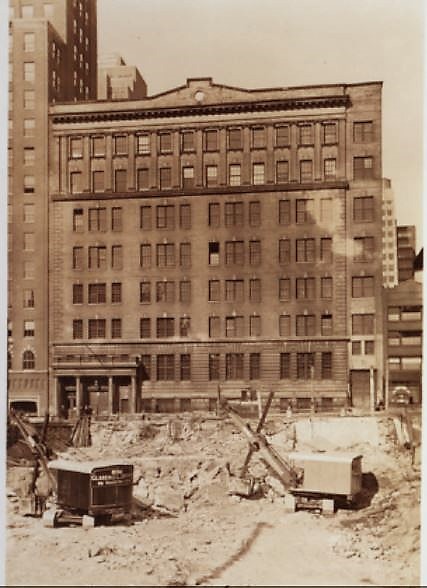
In 1948, the News established WPIX (Channel 11), whose call letters were based on the News‘s nickname of “New York’s Picture Newspaper.” Although the paper moved out of the building to its current location at 450 West 33rd Street in 1995, the television station remains in the former News Building.
On September 4, 2017, the Daily News was purchased for $1 by Tronc, the publishing operations of the former Tribune Company. By this time, circulation had dropped to 200,000 on weekdays and 260,000 on Sundays. In July 2018, Tronc fired half of the paper’s editorial staff, including Jim Rich, the editor-in-chief.
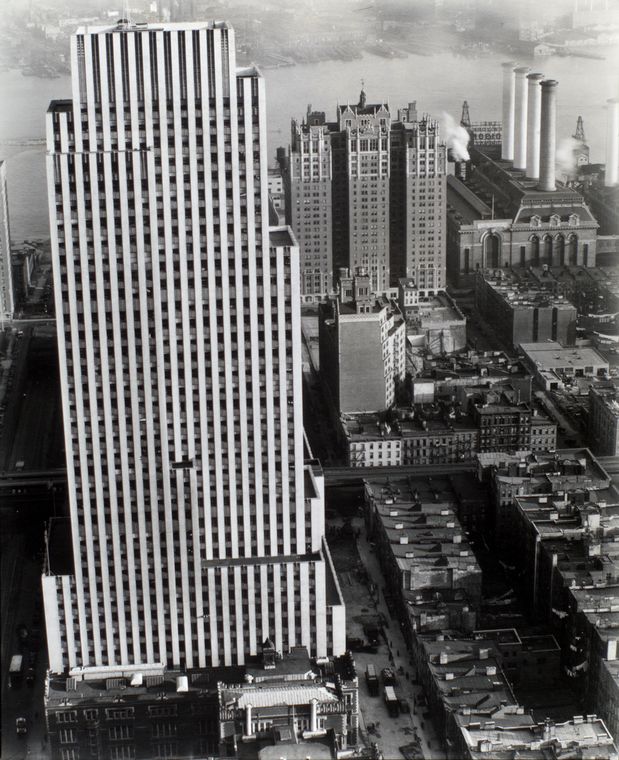
A Brief History of the Turtle Bay Farm
The News Building at 220 East 42nd Street was constructed on lands that were once part of a large farm called Turtle Bay Farm. The farm, which extended from about today’s 41st Street to 48th Street, and from Third Avenue to the East River, had in turn been part of a much larger bowery owned by Jan Jansen Schepmoes (called Schepmoes Plantation) in the 1630s.
Sometime around 1638 the plantation was occupied by Nicholas Stilwell, an Englishman from Surrey County. Stilwell operated a tobacco plantation on the marshy lands, which he called Hopton (possibly in honor of his wife, Abagail Hopton—some historians question whether this was his wife’s name). At that time the bay was called Deutal or Deutel Bay (“deutal” means “bent blade” in Dutch).
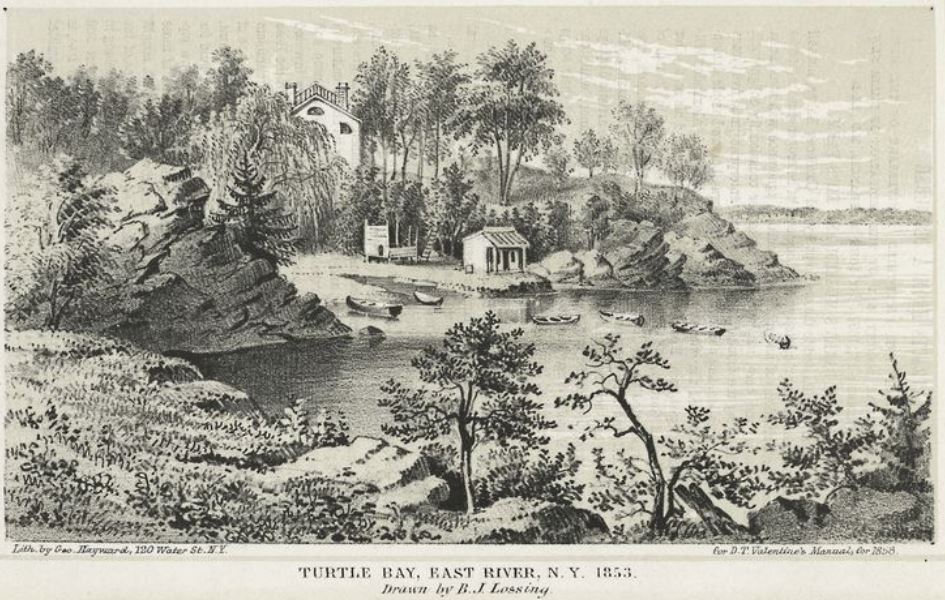
Stilwell was reportedly not in good graces with Willem Kieft, the Dutch colonial governor of New Amsterdam, so he was unable to secure a proper land grant on the property. Then on August 20, 1641, two Englishmen—George Baxter and Walter Hartfoot—purchased the bowery, which was still then occupied by Stilwell. Baxter and Hartfoot bought the farm on a land contract, payable in installments, and sold it to Stilwell for cash. The patent was then transferred from Schepmoes to Stilwell, who thus became the proper owner of the land on which he farmed and made his home.
Stilwell erected a stone house on the shore of the bay, on a point projecting into the river, near the foot of today’s East 45th Street. This building was still standing more than 100 years later, when it was taken over by the government prior to the Revolutionary War and used as a magazine for military stores. It was demolished sometime during the 1870s.
Due to troubles with the Native Americans, Nicholas Stilwell was forced to abandon his bowery on Deutel Bay in 1643 and move into a new residence on the northerly side of Beaver Street, about midway between Broadway and Broad Street (which was near the fort in New Amsterdam). He and his family later retired to Staten Island, which is where he died on December 28, 1671.
Over the next 100 years, Turtle Bay Farm passed hands several times, and was at one time a summer retreat for Francis Bayard. Bayard’s grandson, Francis Bayard Winthrop, purchased the Turtle Bay farm property in 1792 for £1500.
Winthrop called his country seat upon the granite bluff overlooking the East River “Prospect Hill.” His mansion house was located near the present-day intersection of 41st Street and First Avenue (right between present-day Windsor Tower and Tutor Tower of the Tudor City housing complex).
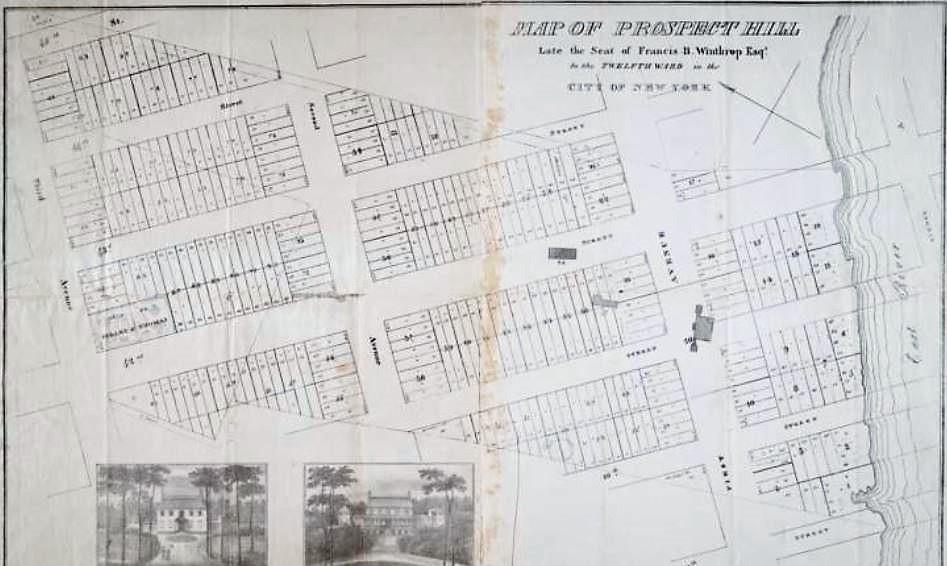
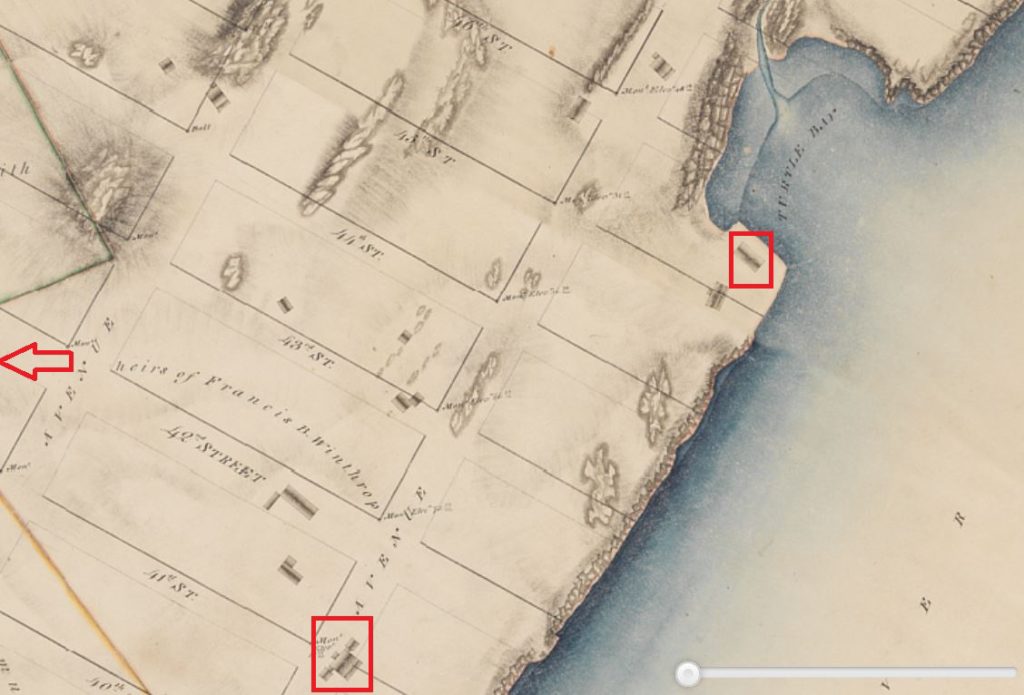

Here’s what John Flavel Mines wrote about Turtle Bay in his book, “A Tour Around New York and My Summer Acre” in 1893:
“There was a grist-mill on this place, fed by a brook that took its rise in the lower part of the present Central Park. It was known, before the time of the Winthrops, as De Voor’s millstream, and where it crossed Fifty-fourth Street, between Second and Third avenues, just below ‘Old Cato’s’ on the Eastern post road, there used to be a wooden bridge of which the Rev. Mr. Burnaby, a traveller in these parts in 17S9, says: ‘In the way there is a bridge, about three miles distant from New York, where you always pass over as you return, called the Kissing Bridge, where it is a part of the etiquette to salute the lady who has put herself under your protection.’”
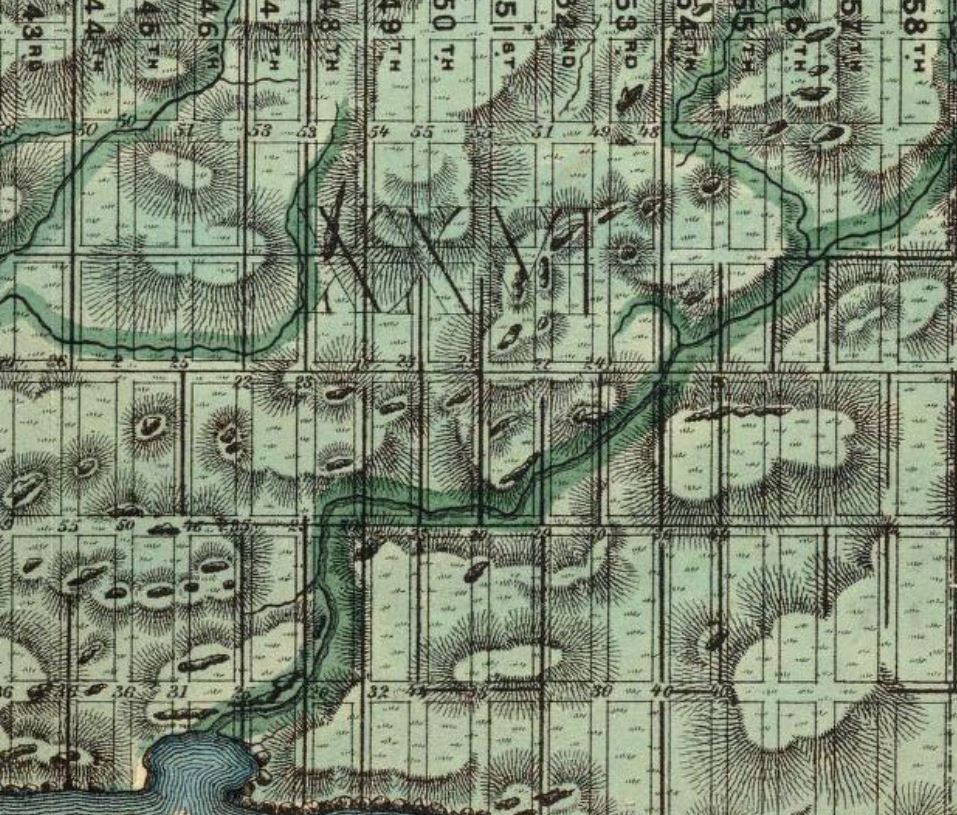
Winthrop passed away on May 16, 1817, but his family continued to farm the land into the 1830s. The Winthrops placed an ad in 1834 to let or lease Prospect Hill, which stated the land contained a manor house, farm house, large barn, coach house, and ice house.
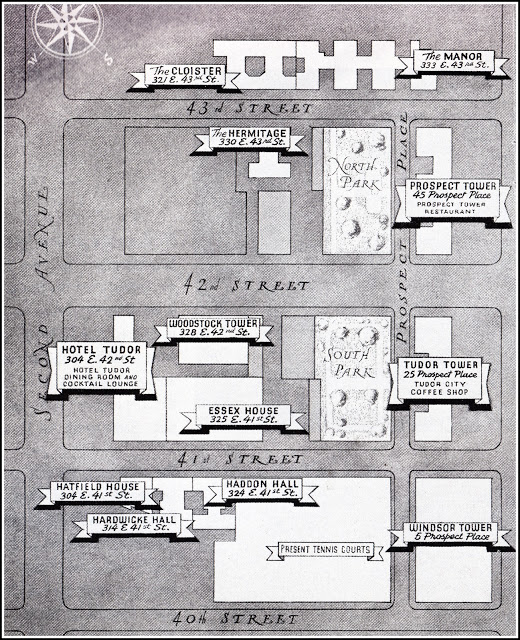
Although the New York Commissioners’ Plan of 1811–which proposed laying out a street grid and leveling the island’s hills–put an end to farming in Manhattan, for some reason Prospect Hill remained an undeveloped granite hill for many years.
By the 1860s, Turtle Bay was one of the city’s seediest neighborhoods, filled with ramshackle shacks, squatters, chickens, pigs, and goats. It was also known as Corcoran’s Roost, with a grim stone wall on the 40th Street side at First Avenue that served as the headquarters for James “Paddy” Corcoran and his band of thugs called the Rag Gang.
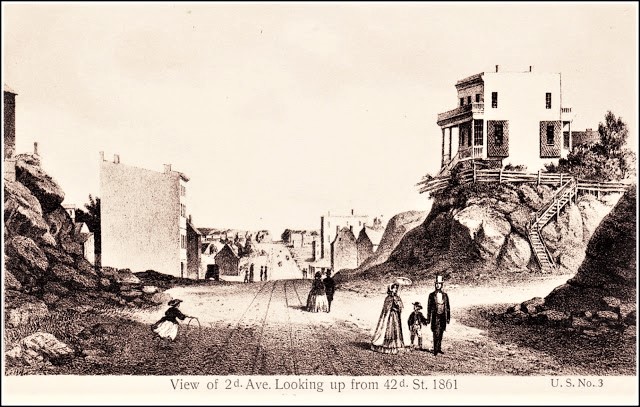
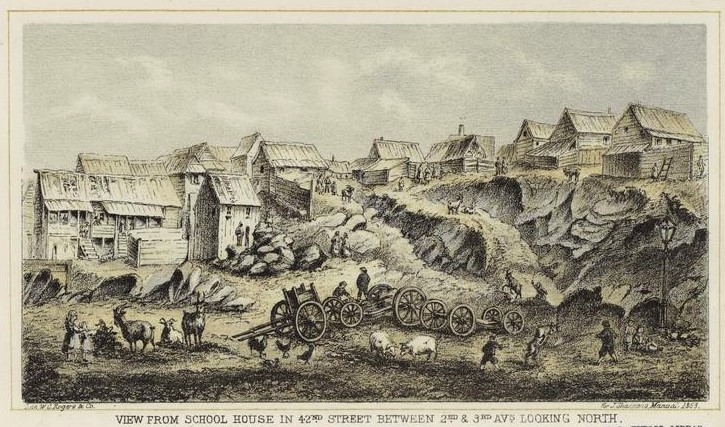
Today, much of the old Turtle Bay Farm is occupied by the United Nations and a large housing complex called Tudor City, which was developed by Fred F. French and constructed beginning in 1932.
Incidentally, some people call the Tudor City complex “Two-dog City” because of all the dog owners who live there. Maybe the Daily News should ask people if they think too many dogs live in Tudor City…
